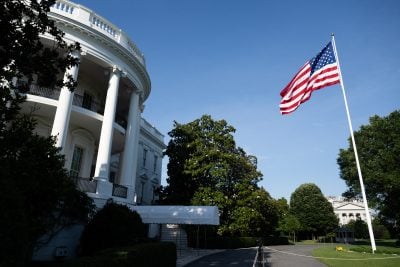The AfCFTA may be a landmark agreement but African trade is nothing new. The very earliest evidence of African trade is described by Herodotus (c. 484-425BC) who wrote of the trade across the Sahara; a trade recorded in rock paintings dating from 10,000BC.
The rock paintings represent mules and horse-drawn wheeled carts that show that salt, ivory, animal skins and slaves were the major items traded northwards while manufactured goods such as pottery, glass and metalwork were traded southwards.
The introduction of the technology that allowed humanity to move en masse – from hunter-gatherer nomadic societies to a settled, agrarian lifestyle – was the adoption of the plough, first to north-east Africa (probably from near-east Asia) that also stimulated trade as surplus harvests were bartered.
Notably, important civilisations were created, such as the Axum Empire located across what is today Ethiopia and Eritrea in an area where evidence of farming dates back 10,000 years. The Axum Empire reaching its apogee in the first century AD.
The Aksumites were key players in the commercial trading routes that existed between the Romans and Ancient India and they were considered one of the four great powers of their time alongside China, Rome, and Persia.
Agriculture also boomed along the Nile Valley. Though often overshadowed by its Egyptian neighbours to the north, the Kingdom of Kush, just north of Khartoum stood as a regional power in Africa for over a thousand years. The Nubian empire reached its peak in the second millennium BC, when it ruled over a vast swathe of territory along the Nile River in what is now Sudan, building more that 200 pyramids.
Historians are not sure of Punt’s location, but the ancient Egyptians recorded that in around 2,500BC. They traded huge caravans of ebony, gold, myrrh and exotic animals with the Land of Punt, which was most probably a region of present-day Somalia on the Red Sea, perhaps extending into Ethiopia.
The pre-colonial era saw a number of powerful civilisations rise and fall in Africa, from Carthage in the north to Great Zimbabwe in the south, and in west Africa the Songhai, Ghana and Mali empires.
Writing in his brilliant book A Fistful of Shells, author Toby Green states: “For decades, outside a small circle of passionate dedicated scholars, these African pasts have suffered neglect. Yet they reveal ancient civilisations and a history whose relevance is absolutely contemporary.”
Green continues by describing the Nok culture that held sway around the plateau of what is now central and northern Nigeria from the 7th century BC The Nok culyure had grown around the development of iron artefacts and agriculture,
Green had already commented on another major development in southern Nigeria, the city of Eredo. Despite a paucity of empirical evidence, it is claimed that this ancient settlement, encircled by 100 miles of ramparts, was at one time the largest city on earth.
A study of African trade throughout history, commissioned by Dr Benedict Oramah, president of the Afreximbank and authored by Harvard University’s Emmanuel Akyeapong describes how, In the year 1324, the Muslim king of the Mali Empire, Mansa Musa, made a pilgrimage to Mecca stopping at Cairo en route.
“According to the Arab chronicler Al Umari,” Akyeapong writes, “Mansa Musa was accompanied by 80 to 100 camel loads of gold and a personal entourage numbering in the thousands.
“He was generous to a fault, giving gifts of gold to all dignitaries that he had to borrow money at usurious rates to return home to Mali in 1325.”
This is surely one of the most notable episodes in the whole history of African “trade”, and highlights the important role that Africa’s gold had on world markets, underpinning Europe’s economies with the use of the precious metal for example, in Europe’s coinage.
As Akyeampong points out: “The survival and prosperity of African communities was so premised on the mutual benefits of regional trade, that scholars of the pre-European contact era noted that in the middle Niger basin in West Africa and in the Indian Ocean, external conquest was counter-productive and regional systems emerged that were based on heterarchy and not hierarchy.”
But this was all to change with the arrival of European interlopers, slavers and an era of colonialisation.
Want to continue reading? Subscribe today.
You've read all your free articles for this month! Subscribe now to enjoy full access to our content.
Digital Monthly
£8.00 / month
Receive full unlimited access to our articles, opinions, podcasts and more.
Digital Yearly
£70.00 / year
Our best value offer - save £26 and gain access to all of our digital content for an entire year!
 Sign in with Google
Sign in with Google 



